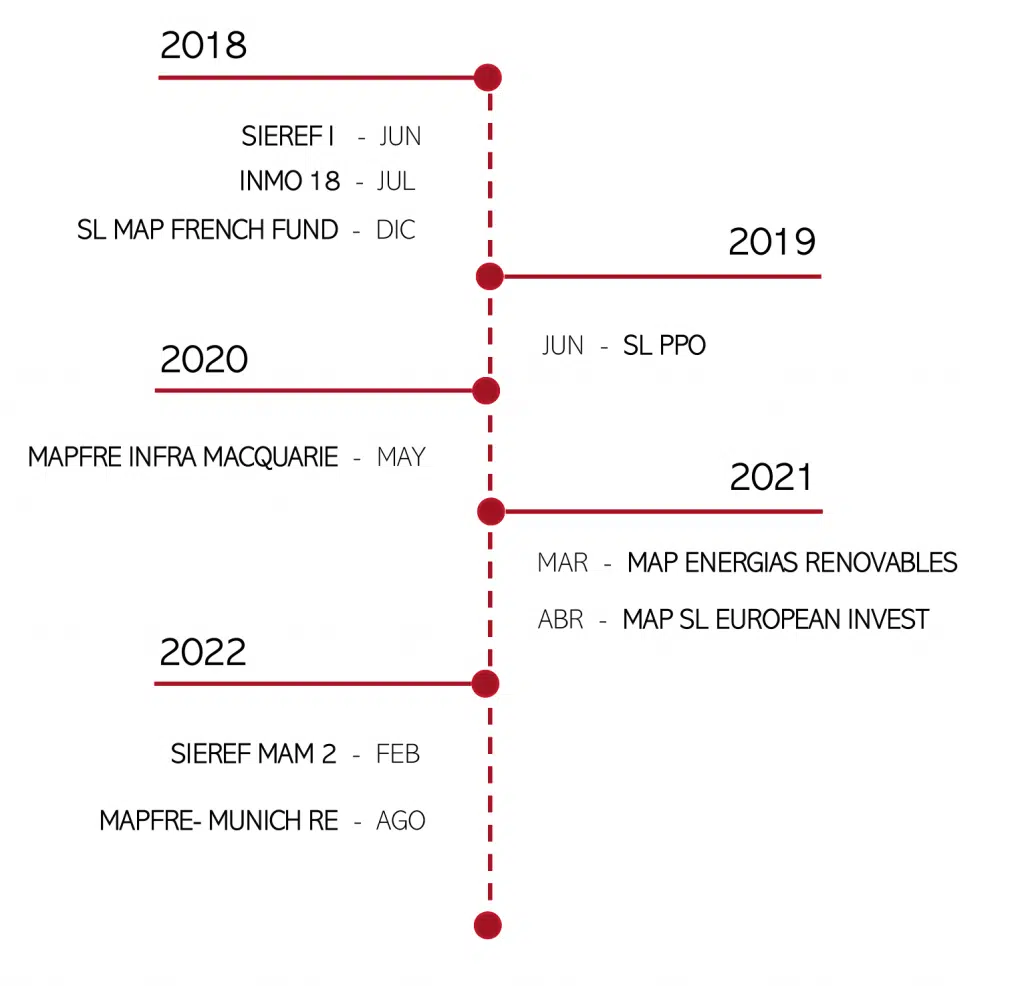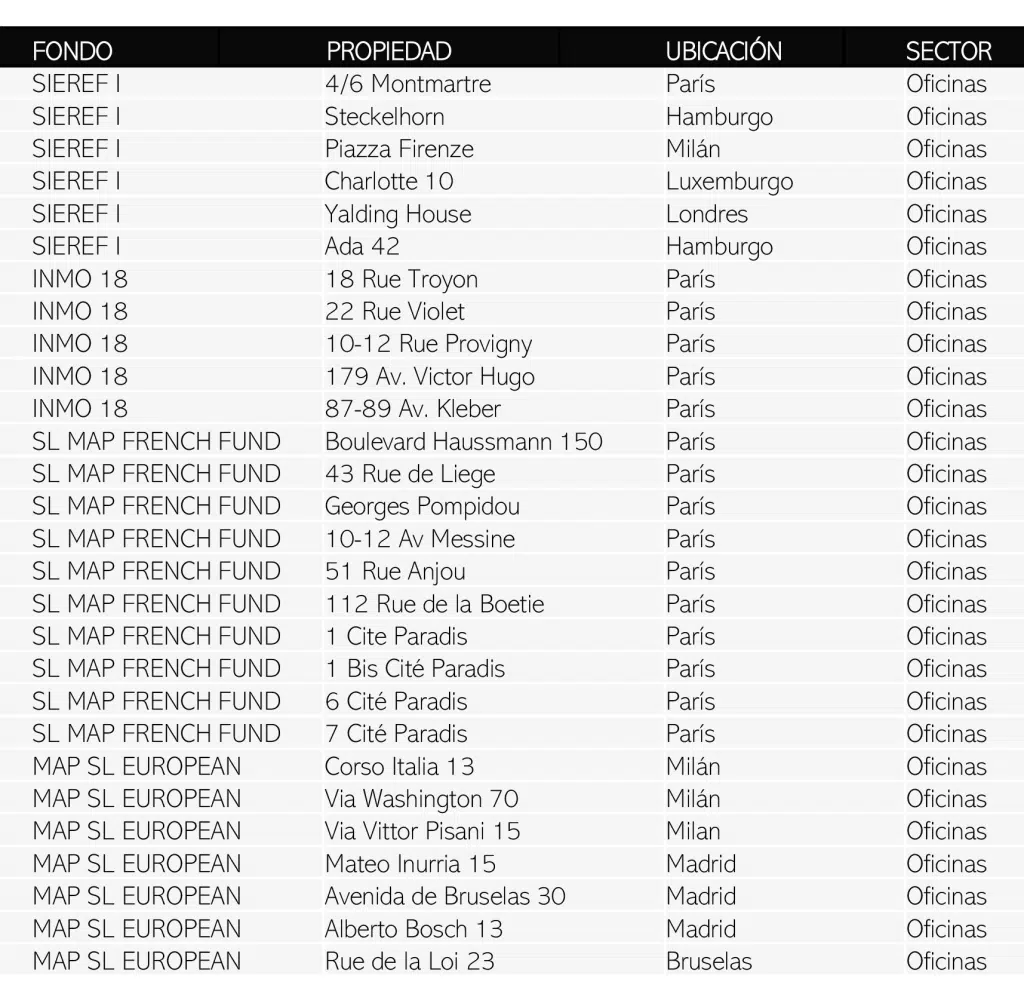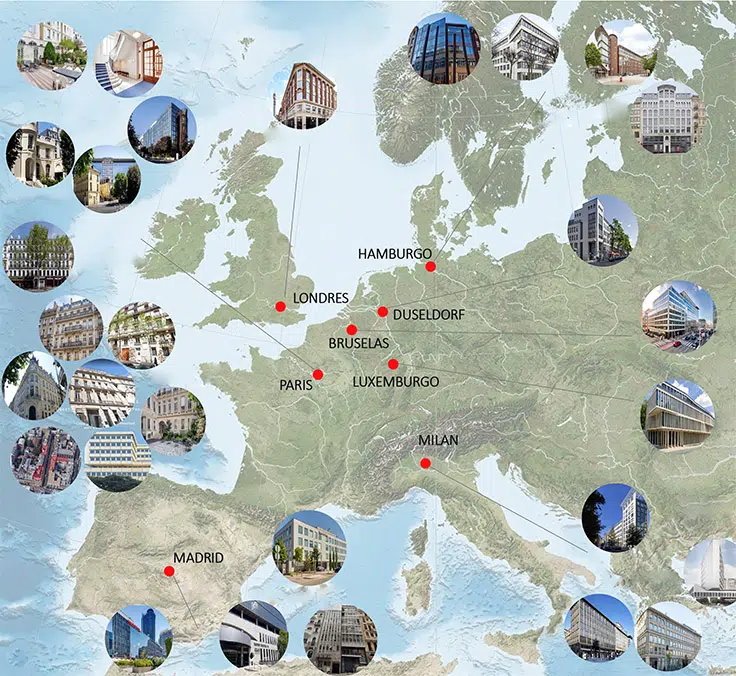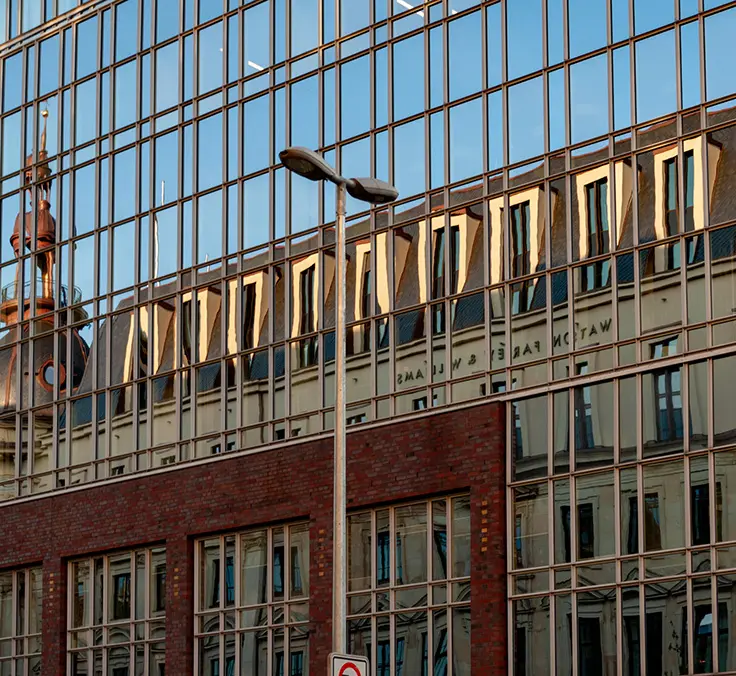ECONOMY| 28.09.2022
How MAPFRE invests in Europe’s best real estate
Rue de la Loi, one of Brussels’ most important streets, was where key decisions were made to rescue the euro during the height of the financial crisis. Or looking at a more recent example, where sanctions were imposed on Russia for its invasion of Ukraine.
It is here that Belgium and the European Union’s most important government buildings are gathered. One of these buildings, located at number 23, was very recently acquired by the joint venture MAPFRE started with Swiss Life to invest in the real estate market. This property shares similar characteristics with all those that have been purchased since 2018, which in turn serve to define MAPFRE’s real estate investment strategy: high-quality offices located in the best areas in Europe, which also leads to them having well-known tenants. These are ultimately defensive investments which will be stable over time.
MAPFRE, like all insurance companies, has been a traditional investor in real estate assets, given that it helps them to diversify their portfolio with higher returns than those offered by more conservative bonds. In MAPFRE’s case, “more than 40 years of industry know-how have been accumulated” through MAPFRE Inmuebles, according to Alfredo Muñoz, general manager of this unit. Nevertheless, a strategic shift has taken place since 2018, and all investments made from that point on have been channeled through real estate funds and alongside the best international partners. This is what is known as alternative investment. “This has allowed us to diversify our assets in geographic terms and share risks with other institutional partners and investors,” added Carlos Díaz, deputy general manager of MAPFRE Inmuebles.
The procedure is as follows: MAPFRE and an international partner (a local partner in the market it wants to access) create a real estate fund and provide significant seed capital, in some cases up to 100 million euros. From there, they allow other institutional investors in, with a target return that is even close to 4%. The initial partners’ assets (which was already in their portfolios) are incorporated within that fund, or they begin directly exploring the market to acquire buildings with that capital. “The funds set up committees where the main shareholders are represented to approve these real estate acquisitions. We analyze and visit the buildings one by one before making a decision,” added Rafa Saiz, head of investments at MAPFRE Inmuebles. Indeed, there are architects, engineers, economists, and lawyers working in both MAPFRE and its partners’ teams (40 professionals work in MAPFRE Inmuebles), which allows them to carry out a comprehensive analysis of all the assets. In MAPFRE Inmuebles’ case, the investment team was reinforced last year in order to find better opportunities, mainly in the Spanish market.
But it is not only about finding the best building in the most important and central area of the city, as maintenance is also essential to retaining its value. “We have a technical department that determines what projects to carry out in the building. You can’t just paint and maintain the exteriors, you have to position the asset well so that when the investment matures, normally within a period of around 10 years, it will have been revalued,” added Díaz. In addition, as the MAPFRE Inmuebles team pointed out, incorporating ESG (environmental, social, and corporate governance) criteria into these renovations has become essential. “It’s now a sales requirement, above and beyond energy savings. First-class tenants demand an array of services from their buildings, and chief among these is complying with sustainability criteria,” added Muñoz.
A total of nine real estate funds have been set up in only four years, and more are being participated in. Within the section of alternative investments, an infrastructure fund has also been launched, as well as a private capital fund, and a renewable energy fund, in partnership with Iberdrola. In total, over 1 billion euros in capital has been committed (mostly in real estate), 70% of which has already been disbursed. However, despite this growth, and given MAPFRE’s conservative nature, this amount still makes up a reduced percentage in terms of the Group’s balance sheet, which is over 60 billion, and in comparison to other large insurance companies. In fact, since 2016, sector exposure has remained stable, as real estate is not only being purchased, but also sold.
MAPFRE’s international presence (with business in nearly 40 countries) has helped it to join forces with the best partners in the world. They first contacted GLL, a benchmark real estate management and investment firm in Germany formed by a joint venture between Generali and Lend Lease, which was acquired one year later by the Australian company Macquarie. This partnership was a clear win: MAPFRE gained access to the best real estate in different European markets, while GLL was able to raise capital from Spanish investors, thanks to MAPFRE’s appeal and the trust its brand inspires. So much so that the funds’ main shareholders are the Spanish insurance industry’s direct competitors. In fact, Macquarie, surprised by how quickly MAPFRE raised the money for the first fund, wanted to go one step further and in turn start its first infrastructure fund in Spain, also with the insurance company, and a second real estate fund in 2022. And this partnership will continue in the short term with new projects.

Apart from GLL, two funds were also launched with Swiss Life. The first one stemmed from the acquisition of nine buildings all at once in Paris, in one of the best areas of the city. And three more assets were recently incorporated into one of them. Munich Re, one of MAPFRE’s long-time partners in other business areas, recently joined this team of major players, and they debuted together with their first real estate fund.

For now, the overview of what each department has done, providing new resources in the area of Transactions (asset acquisitions and sales), is more than positive, to the point that investors that joined in the first fund have again put capital into later funds that were launched (95% of the capital in SIEREF I was repeated in SIEREF II), no longer needing to practice due diligence. This once again demonstrates the trust inspired by a brand that is already becoming a benchmark in other sectors, such as real estate, in this case.
RELATED ARTICLES:





